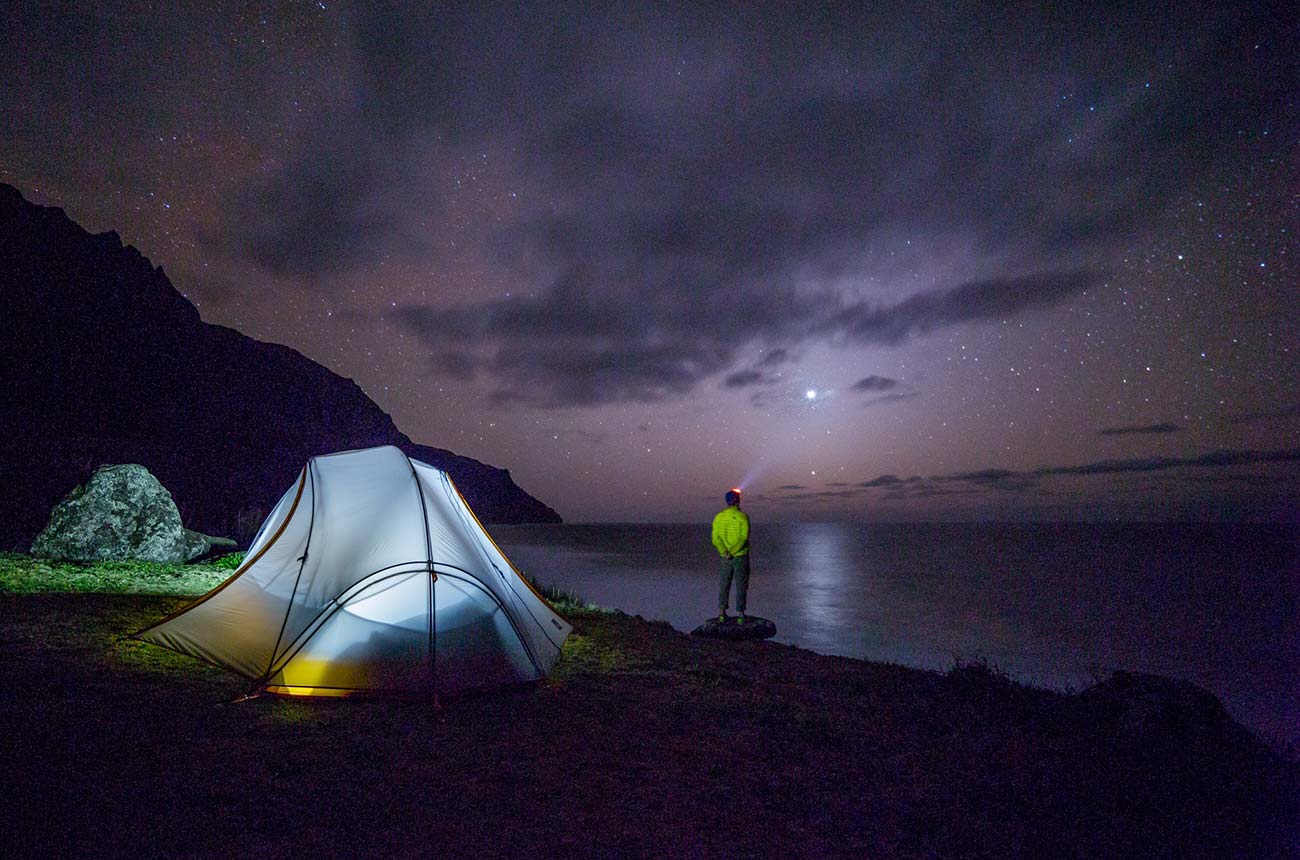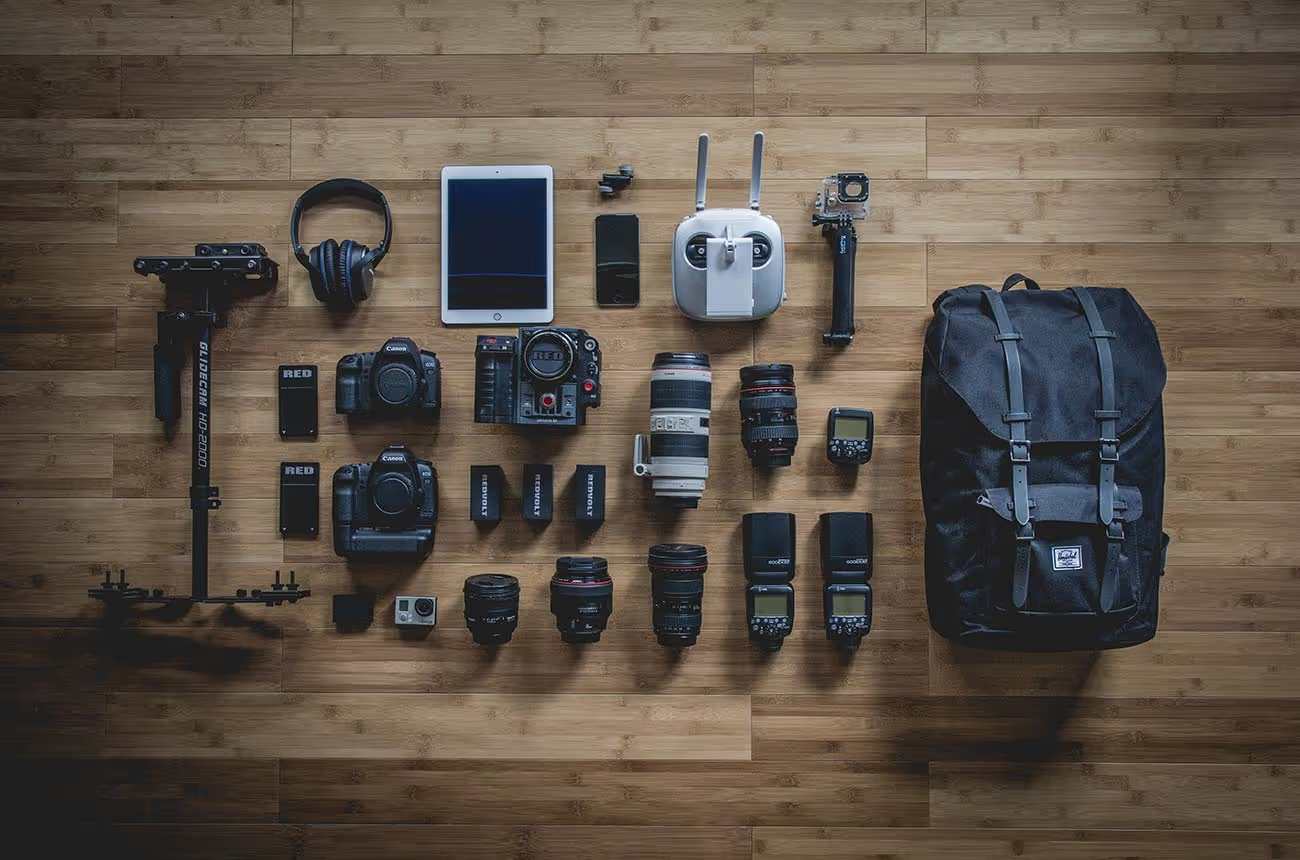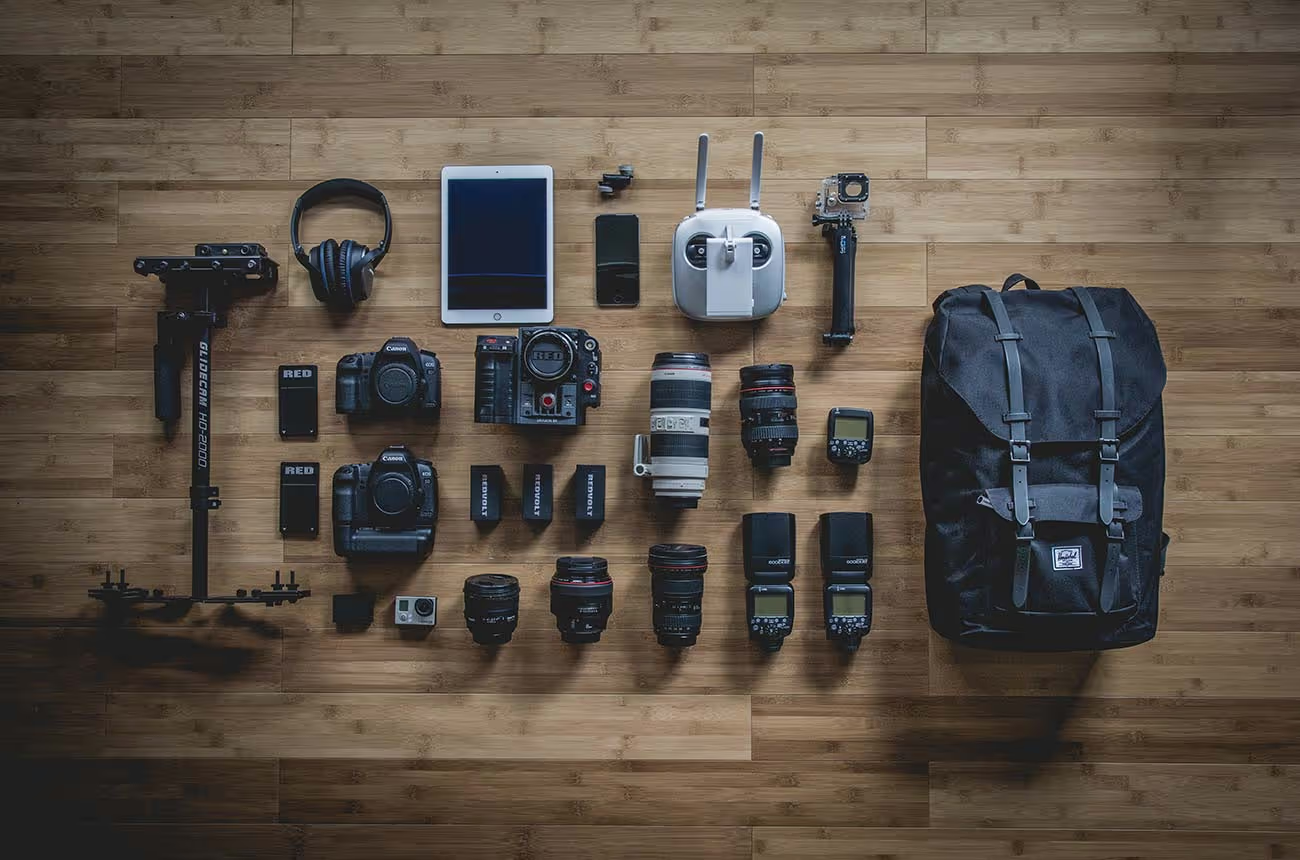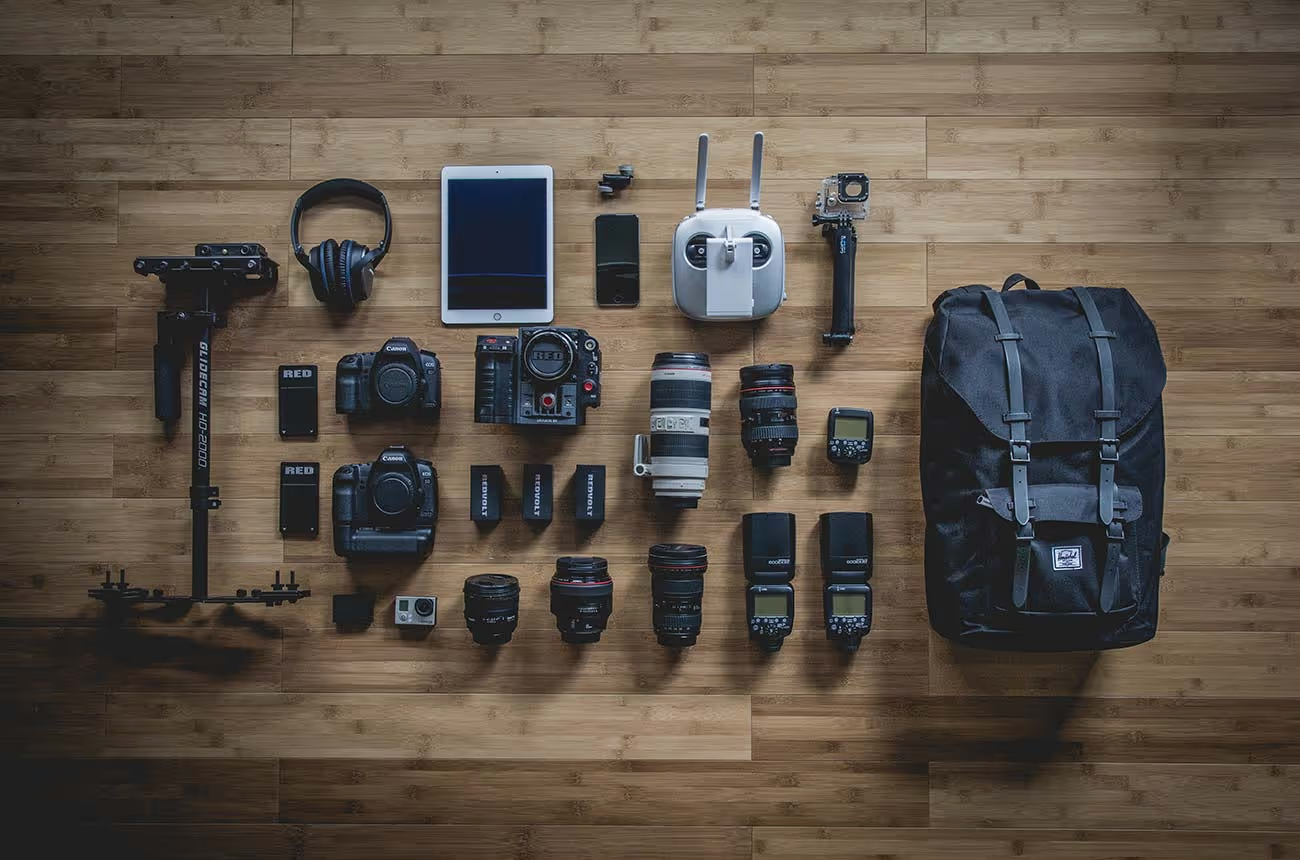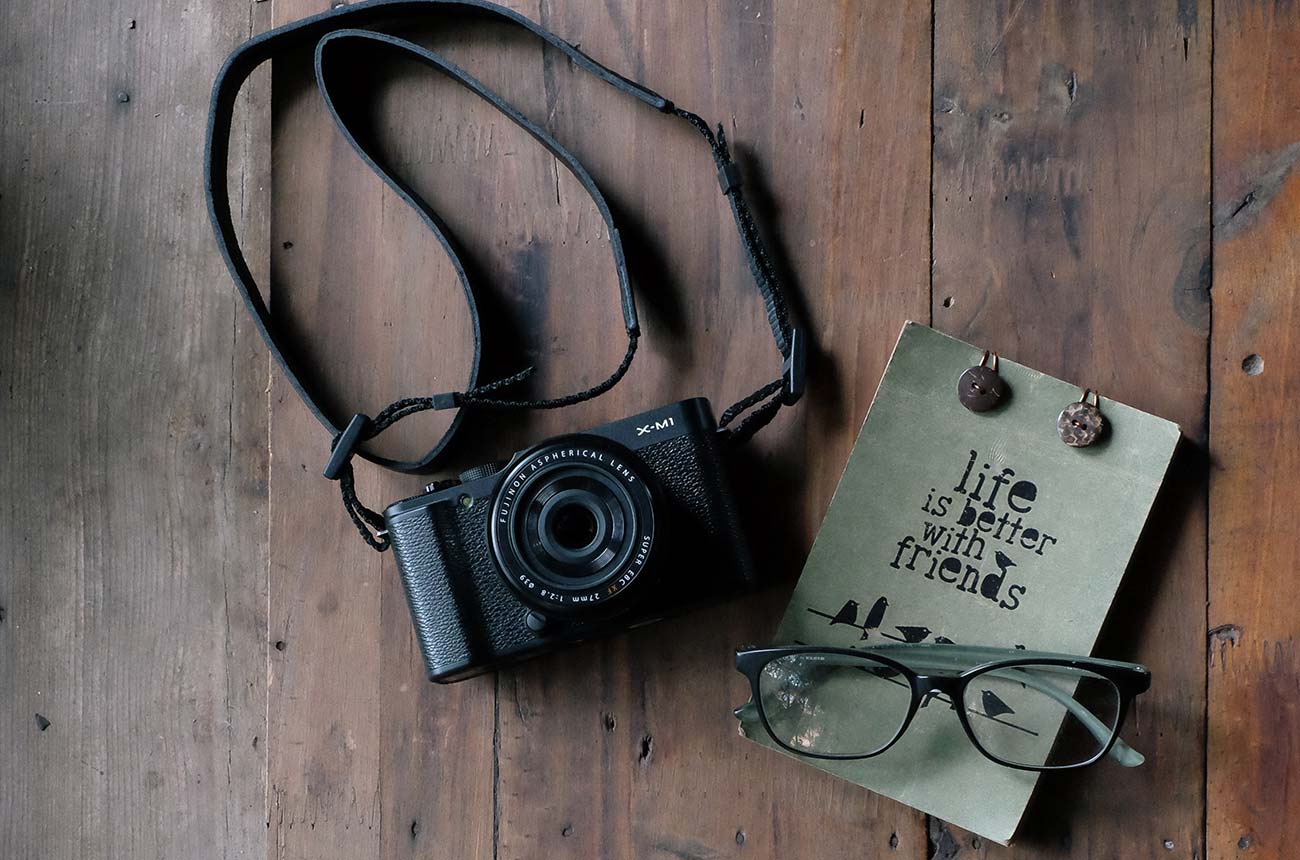
The Art of Art Direction
Peter Parnham talks to our latest Oscar- and BAFTA-winning Techos’ Guild member, KIM SINCLAIR…
“The problem of course is that the cars drive on the wrong side of the road here. The film industry would probably be twice as big in New Zealand if we drove on the right-hand side of the road!”
-From an interview by Tim Lisowski (‘Artstars’)
There is front lawn right up to the door of Kim Sinclair’s garage. When he opens the door to the house, like a trick of set design, the long passage seems to stretch away to infinity and a small garden beyond.
Shelves of books line one side of the passage. They are the kind of larger-sized books that never line up on a shelf because they are full of imagery – some in landscape, some in portrait, but never a standard size.
A couple of bicycles have been wheeled inside, and an internal door reveals a garage full of other bicycles; that is why there is no need for a concrete driveway.
“It’s not many,” says Sinclair, reducing a dozen or more bikes to a few categories of design and purpose. “There are only three of us.”
Upstairs in his home office, he sits at an uncluttered, built-in desk, featuring a powerful-looking Mac laptop. A Dell or Toshiba wouldn’t look right somehow.
Sinclair’s Oscar and BAFTA statuettes are probably in the house somewhere, but if so, they’re not in your face. (In case you’ve been in a coma since the beginning of the year, for his work on Avatar Sinclair shared this year’s BAFTA for Production Design and Academy Award for Best Art Direction).
As Sinclair relates his story, he paints a picture of a good deal of luck and happy coincidence, and this gives him the air – or rather the lack of airs – that Kiwis love about successful Kiwis.
“I did an architecture degree, which was pretty much a random decision at the last minute. Then I worked for the Education Board for three years,” he laughs. “Boring stuff, but everyone’s got to go through it. But I was sick of working in an office environment so I went building with a friend of mine, Neil Kirkland, and we were architects/builders. Whenever we – infrequently – got a job, having designed it we’d go, ‘Would you like us to build it?’ So we did that for a few years. By that time my wife, Kirsten Shouler, whom I met at architecture school, had also decided she wasn’t happy working in an architect’s office.”
It soon becomes clear that Sinclair is one of those people who more often than not tell a story like a script – split into action and dialogue.
“Kirsten was working as a radio journalist in 1982 when she saw a classified advertisement in the newspaper for draughtsmen as they were called in those days. It was for Savage Islands. Mo Kane (Maurice Cain) was the production designer.
“So Kirsten went in there and met Mo. She got the job, and he said, ‘Have you got anymore like you?’ She said, ‘Yes, my boyfriend is also an architect.’ So Kirsten rang me up and said, ‘Quick, there’s a job, and they pay!’
“So I raced in. I’d forgotten to shave that morning, which probably added to my charm,” laughs Sinclair.
“Then Mo said, ‘Do you know anybody else?’ So I rang up Neil, my building partner, and said ‘I’ve got an interesting job here for you.’ He came in and got the job. So we all got stuck in and have basically been doing it ever since.”
“They shot stuff in Greenhithe near Auckland to cut with the reverses that were shot in Fiji, and it actually worked really well. As an architect, it was a whole new thing for me. I worked for almost a year and never even saw a camera or a shooting crew, but it was a very steep learning curve about the art department side of films.
“My second job was a film called Constance, designed by an Australian theatre designer called Richard Jeziorny. This was my big hands-on film. We didn’t actually build anything, but we painted a lot of the sets. Richard was a theatrical designer, and painter, and I learnt a lot about scenic art from him. Then I ended up kind of being beside the camera and art directing the movie, so I learnt a lot on that job. It was a terrible film, but it was a great art directing job.”
Hands on
Sinclair says hands-on experience is a good foundation.
“When the industry is small, you always have to help build the set, help paint the set, help buy the props – you do everything. That’s great, it gives everybody in New Zealand a really good training that I don’t think they get in other countries, not that I’ve seen.
“By 1985 or so, I decided not to take on any more architectural work. I still see myself as an architect, because once you’ve learnt that kind of ethos, it’s hard to drop it.
“It had become unfair on clients. They’d say, ‘We want you to design our kitchen additions,’ and I’d say ‘Sure,’ and then I’d ring up and say, ‘Look, it’s going to be a year before I can finish the sketch designs.’”
But he says regular architects tend not to take set design seriously. “They immediately think you’re making a little custom wood cut-out.
“We did a set in the South Island that we had to build enormously quickly,” he recalls as an example. “It was a cliff for Vertical Limit. The scale was something like 200 tonnes of concrete in the foundations alone.
“We had to have civil engineers designing it in Christchurch. We had something like 20 different modules and we tendered it out to different engineering firms all over the South Island. It was a massive construction job, 38 metres high, so it was one of the tallest structures in the South Island. It was very far from putting French braces on the back of a couple of flats, that’s for sure.”
Set building jobs reflect changes in the wider construction industry, notes Sinclair.
“Originally, the film industry were cowboys. Nobody knew any better. On my first job I remember one windy day seeing a carpenter run along a 20-foot high top plate with a chainsaw going. He had cut something, stood up and started to lose his balance, so he had to take a step, then to stop himself he had to take another step, and before he knew it he had run the whole length of the top plate revving the chainsaw and screaming. He leapt into the air, threw the chainsaw away and landed on his feet.
“He was fine, and everybody thought that was a great joke. But these days we have to be very professional, and health and safety is a major part of the job – it’s as important as budgeting. Now we have hard hats, safety glasses, and working at height everybody’s harnessed – there is just no room for cowboyism at all.”
Location management has also improved.
“Access to the land, the locations of New Zealand, is vital to us. I’m just amazed at anybody who can go in and act in a cavalier way towards locations.
“On Castaway, we were filming on a protected island in Fiji. We had a monitor, and he really appreciated the care we took.
“I think he was probably glad that we were New Zealanders. In Mexico and Thailand we’ve filmed in national park areas and pretty much they do not have environmental protection in place.
“So I wrote my own code of practice, which became the production’s code of practice. I don’t know whether the locals particularly appreciated it, but we didn’t want to spray-paint rocks or have loose polystyrene floating around. It’s just commonsense to look after the locations.”
Complexity
According to Sinclair, as jobs have got bigger and more complex the titles have changed too.
“In the old days there was the art director, which we now call the production designer – but the Oscar is still called the Academy Award for Art Direction. Production designer, art director, supervising art director, lead art director, it’s all the same job, which is art direction.
“On a big job you’ll have a production designer.
Predominantly their job is to interpret the director, to take the story from the script and get it on screen. They make the ultimate decisions, and then the art director’s job is like the executive wing of production design.
“Where there’s more than one art director we tend to just divvy up the jobs. Somebody will do just sets, somebody else will do all of the vehicles, or somebody will do one location and somebody else will do the other location.
“Or somebody would do on-set art direction, making sure everything looks right through the camera, as opposed to off-set art direction.
“Off-set art direction is all the preparations – effectively like pre-production. These days pre-production and production take place at the same time. Pre-production finishes about five minutes before the camera rolls, so that’s that.
“As soon as you reach a situation where you’ve got two or more art directors, there’s normally a supervising art director, and with that role normally comes the responsibility for the budgeting and planning and crewing – we take on the more boring aspects of the job,” grins Sinclair.
“Set decoration is an interesting role, because in the States it’s a huge job with big responsibilities. In New Zealand that role tends to be taken on by the art directors – this comes from when we were small.”
Sinclair explains that the challenge is making the art direction add to the story, but this is heavily influenced by the type of script.
“I’ve discovered there are two sorts of scripts. There’s a literary script and there’s a visual script. Say it’s some drama set in a house. To some writers it’ll be all about the relationships between the people, and they’ll just say ‘It’s a suburban house.’ From another writer, it will be: ‘Remy is in the bedroom, he looks down the space over the timber rail and sees Susan in the kitchen standing at the microwave’.
“You can tell that they’ve actually imagined the scene playing out in a space and they’ve described it, which can be good and bad because the director might actually see it slightly differently.
“So you read the script and break it down – Is it a modern house, is it an old house? That might come from the script, but if not, you go ‘Wow, this might be amazing if they were living in their mother’s house,’ – or something like that.
“So that comes from the writer. Now the director comes in and it’s exactly the same; some directors will say to you, ‘I’ve thought this through; it’d be great if this character had inherited his mother’s house, and that will explain why it’s creepy.’
“You could make suggestions, maybe you could even argue,
‘Have you thought what it would be like if they had just moved in, he was nouveau riche, he just won Lotto and it’s a brand new house?’.
“Other directors will have no idea what it looks like and they’ll totally leave it up to you. I’m happy to go either way.”
Contemporary nuances
“What is interesting is that when they hand out art direction awards, a period drama normally wins, because of the costumes and other stuff.
“They go, ‘Oh, a period movie, oh great, look at all the design,’ and that’s really infuriating for everybody who works in the art department. You’re doing just as much work in a contemporary film, and there’s just as much decision-making, just as much discussion. In fact there’s more, because of the nuances the audience are reading.
“If it’s set in 2010, the audience are picking up if the guy’s got an iPhone or if they’ve got a brick. It’s ‘Wow, they’ve still got a brick, what does that mean?’
“The set decoration, the props buy-in and the set direction on a contemporary film is also more critical than, say, something set in the 1950s where your challenge is really that the audience believes you’re in the 1950s. That’s pretty simple really, because it’s done by the hair, makeup, wardrobe and vehicles.
“You could almost put the same wall behind them, or the same chair, because it doesn’t have that resonance with the audience that those other things do.
“My whole life I’ve worked on movies and no one’s ever noticed the art direction, which I take as quite a good thing. I always try and keep it in perspective – it’s only the curtain behind the actor, it’s not the actor.
“Obviously you will try and get it right, but I go to films like everyone else and I see things that are wrong. You know that the guys making the film knew it, they’re not stupid. They probably had sleepless nights, they probably had meetings, they probably shouted, people were probably fired over it.
“They probably begged the producer to be allowed to fix it, and they couldn’t afford to, or there wasn’t time, or the light was right and the director of photography said, ‘We have to shoot this now!’.
“Films are hopelessly compromised from the word go because they have to be produced, which costs time and money. This was the crazy thing about Avatar – it might be the most expensive film ever made, but every day, we turned over every buck before we spent it.
“So it’s a constant, constant compromise there. And you’ve got to spend the money wisely, which sometimes happens and sometimes doesn’t. You can get directors that want to spend money on a little thing that they’ve always imagined ‘just so,’ even though it’s not a big story point. Often the biggest, most expensive sets are the best production value, because you spend a lot of screen time on them.
“But something that the writer has written in the script that the director likes, that was just there for one scene or one shot, might only cost ten thousand dollars, but it might actually, per screen time, be a huge extravagance.”
Big Decisions
“It is the big decisions that save the money. That’s why it’s good to be involved early, particularly with the decision about where to base the production. You could do a lot of work scrimping on props and save a few dollars, where in fact the wrong decision was made about which town to base the production in and they’ve blown millions of dollars in logistics.
“Early on in Willow I learnt a good producer is not afraid to spend money to save money. You often see experienced producers on smaller projects making ridiculous decisions to save a penny. I’m totally sympathetic with the mentality, but if we can’t spend any money we can’t do any management, because there is so little room to move.
“On the bigger jobs we can actually do more effective cost management, because we can actually come up with a kind of management philosophy, or a plan. It can play out over six months – at first it might be, ‘Oh, is this the right decision?’ And then later, ‘Oh yeah, that graph’s looking a bit better.’
“I am a great grapher; I have a graph for everything.”
Sinclair is not joking; his office walls are lined with an archive of ring binders cataloguing the projects he’s been involved in.
Inside are clear pouches with sheaves of multi-coloured cost graphs and photos from recces. Even boarding passes for international flights are neatly filed. He admits to liking the management side of things, and there seems to be something about keeping things ship-shape that appeals to him.
Yet supervising and art department means more than cost control; good communication is vital, but for Sinclair that doesn’t mean management by email.
“I get over 300 e-mails a day because people in the next office will email, and copy it to mail groups. Forty people will get an email that really only two people need. It’s just such a time waster and it’s so indirect.”
He has a much simpler approach: “Do a good old-fashioned walk through – find the bloody person and talk to them.”
Peter Parnham
“I like to be behind the cameras; I’m a typical Kiwi
bloke. I think it will blow over. I hope so.”
(Kim Sinclair on his awards, NZHerald)










